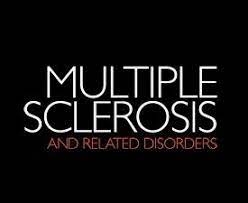Background:
Slowed information processing speed is the most prevalent cognitive symptom in persons with multiple sclerosis (MS). The most commonly used instrument to measure information processing speed in MS is the Symbol Digit Modalities Test (SDMT). However, visual, oculomotor, and oralmotor deficits are frequently observed in persons with MS, and performance on the SDMT relies on these visual and motor functions, in addition to cognition.
Methods:
The current study examined the relationship between the SDMT and the King Devick Test (KDT). The KDT encompasses similar oculomotor and oralmotor demands as the SDMT but requires a smaller attentional load. One hundred and thirty participants with MS completed the oral version of the SDMT and the KDT. Ordinary nonparametric bootstrapped regression models were performed with 1000 bootstrapped samples. Bootstrapped confidence intervals (CIs) were bias corrected.
Conclusions:
Visual, oralmotor , and oculomotor functions contributed significantly to SDMT performance. Therefore, these sensory and motor functions must be taken into account when interpreting SDMT scores.
Summary Points:
- King Devick Test performance explained 31% of the variance of SDMT performance, much more than demographic and disease related variables.

